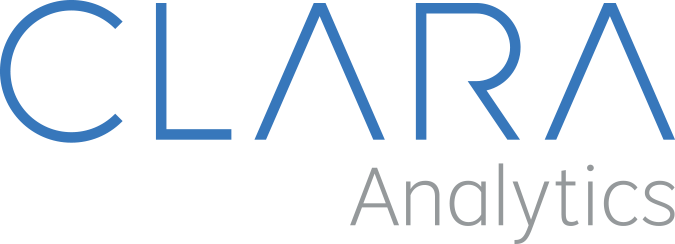Find the Right Doctors, Improve Medical Claim Outcomes
Today, workers compensation leaders understand that by using physicians who have a track record of achieving superior outcomes, such as enabling prompt recovery and early return to work, they can facilitate improved results and significant savings on each and every claim—spanning from simple medical-only claims to complex and even catastrophic cases. This “outcomes-focused” strategy aims to match the right physician to the right case in terms of the severity of the injury, the level of risk and treatment expectations.
This is particularly important as medical costs still run high, consisting of more than half of claims expenditures. Many workers comp programs also fall short of achieving optimal return-to-work (RTW) results. To remedy this, insurance and claims organizations must be able to identify and partner with physicians who understand that there are across-the-board benefits for all stakeholders—payers, employers and workers—when RTW is achieved in a timely manner. At the same time, physicians must also be skilled at making injured workers feel cared for.
Getting the right providers involved from the start of a claim is essential. According to NCCI’s Medical Fee Schedules and Workers’ Compensation 2023, physician costs account for roughly 40% of workers comp medical expenditures. Cases can quickly escalate, resulting in considerable treatment, significant lost time, permanent disability and attorney involvement—all of which mean explosive claims costs. Provider selection is evolving, however, and new technology can help organizations more reliably select those physicians with “the right stuff” to treat work comp injuries.
The Impact of Outcomes-Focused Physicians
How Provider Selection Has Changed
In the past, provider networks were developed by using heat maps and geo-mapping tools, which identified physicians based on location and proximity to employer sites. These networks provided access to care but did not screen for quality of care. Networks recruited providers who were willing to contract and accept certain rates and were located within a certain radius of the employer’s site.
Today, there is a more sophisticated approach to network development and provider selection. Analytics have come a long way in being able to assess provider outcomes, but not all workers comp programs are leveraging this technology to their full advantage. Today, artificial intelligence (AI) —specifically machine learning—has the ability to root through a wealth of medical bill and claims data to accurately evaluate and rank a provider’s history of treatment and results, allowing organizations to adopt a more outcomes-focused approach.
Key Benefits of High-Quality Providers
It is important to understand how quality providers impact claims. Analysis of medical bills, claims transactions and other work comp data tells us that these physicians on average are able to reduce:
- Time away from work
- Extent of permanent disability
- Attorney involvement
- Inappropriate treatment and procedures
- Medical and indemnity costs
How Outcomes-Focused Physicians Improve Claims
The claims data tells the story. It shows that outcomes-focused physicians take the time to identify negative and positive factors affecting recovery, including comorbid conditions such as obesity and diabetes. They help adjusters understand the impact these factors will have on reserves, and they go the extra length to understand an employer’s RTW protocols.
Worksite managers want physicians who understand that there can be a negative psychological impact for injured workers who are away from work for prolonged periods. These factors can worsen over time, making it harder for employees to return at all. Quality physicians carefully assess the injured worker’s abilities and look at the types of accommodations that can be made if restrictions exist.
Outcomes-focused physicians also make every effort to obtain a complete medication history. During the patient intake, a worker may reveal that he has previously struggled with substance abuse. With this knowledge, the physician might avoid prescribing an opioid medication or other highly addictive substances.
These physicians are thorough in arriving at a recommendation for surgery, performing all the right diagnostic tests and going through first-tier treatment options to ensure an invasive procedure is necessary. At the same time, they will not delay surgery when it is necessary.
The Role of Physician-Patient Communication
Top physicians possess valuable interpersonal skills, which are subjective and cannot be easily measured in the data, but at the same time, these talents have a significant impact on outcomes. For example, a physician may take a few extra minutes to address an injured worker’s questions and concerns and, in doing so, demonstrate a deeper sense of caring and compassion. Injured workers would walk away with a satisfied patient experience and never think about contacting an attorney. This is opposed to a physician who rushes injured workers in and out of exam rooms, leaving them feeling uncertain about their recovery and future; these workers might feel inclined to seek legal representation.
In some instances, a physician might have to explain the workers comp process to the injured worker as it relates to the review and authorization of a treatment plan. For example, a procedure might require approval by the claims payer. One physician might make an offhand comment, slamming the payer for requiring authorization. Meanwhile, another might give a more positive explanation—that the payer requires more information to ensure the procedure is in the patient’s best interest. This second provider—by showing support for the process—demonstrates that at the end of the day, all stakeholders are working together to get the injured worker the treatment needed to recover and get back to work.
On the opposite end of this spectrum, low-performing physicians typically prolong the treatment period. They may request multiple diagnostic tests and other elective procedures, some of which may not be necessary. They often prescribe multiple medications and extend physical therapy beyond the norm of what’s expected for a particular diagnosis. Delays in treatment can also impede the RTW process.
When an outcomes-focused network is established, adjusters have the ability at their fingertips to select the best-rated providers who are conveniently located to employer sites. In locations where there may be a scarcity of network providers, AI can also assess the quality of non-network providers. In this way, when claims handlers have to go out of the network, AI can point them to the best non-network providers.
A Three-Pronged Approach to Enhancing Provider Selection
Having a quality physician involved in a case can have a dramatic impact on the outcome. As such, insurance and claims organizations should look to implement a three-pronged approach to ensure injured workers are directed to the best providers. Here are three key points in the claims process where organizations can optimize their provider-selection process:
Pre-injury
Successful selection of providers starts before injuries occur. At this juncture, workers comp program managers can take the time to strategize about the development of their outcomes-focused networks. They can deploy AI to identify physicians with a track record of good results and hone networks to minimize the use of low-performing physicians.
During this pre-injury phase, program managers should also educate employers about the role of an outcomes-focused network in providing quality care to injured workers—while simultaneously reducing program costs. In this way, employers will better understand why these networks exist and why specific providers should be utilized. Down the line, this education fosters greater buy-in for the program as well as the support needed to direct injured workers to the right physicians.
Brokers should be educated as well. Since they serve as trusted advisers, they can help employers get on board with such managed care objectives.
Post-injury
When an employer has established an outcomes-focused network, they must comply with relevant state mandates. For example, in Pennsylvania, employers must post a notice about existing provider panels. When the listing is properly posted, injured workers are required to seek treatment from one of the designated providers.
Since claims handlers initiate contact with the injured workers and communicate with them throughout the claims process, they should also understand the benefits of an outcomes-focused network so they can properly convey the value to injured workers.
Insurance and claims organizations should also streamline the process of getting injured workers to the right physicians. For example, many organizations collect claimants’ cell phone numbers and email addresses during the intake process.
With this information, adjusters can text or email the injured worker a list of select providers in their area. Organizations can configure their AI systems for automated follow-up. After a couple of days, adjusters are prompted to check in and see if injured workers made use of the list and how they’re doing since the injury. In this way, automated technology helps facilitate timeliness and quality of care.
Redirection
If treatment has already begun, but an injured worker has ended up with a physician known for poor outcomes, an organization may be able to take steps to rectify the problem if redirection is permitted in their state. Here again, AI can help. Insurance and claims organizations can configure their AI system to alert them when low-performing providers are used and to redirect injured workers to better providers.
AI can also help organizations understand the overall distribution of claims among low- and top-rated physicians and to develop a plan to transition injured workers from physicians with less-than-optimal outcomes to ones with outstanding results. Again, any type of redirection strategy must be in sync with state regulations.
The Future of an Outcomes-Focused Strategy
An outcomes-focused approach requires that insurance and claims organizations identify physicians who consistently provide better outcomes when treating injured workers. Being able to identify outcomes-focused physicians has been made easier with increased integration of big data and the use of AI to sort through and make sense of all this information.
Once the right physicians are selected and placed in an outcomes-focused network, organizations can use digital technology to get injured workers connected to these providers quickly and seamlessly. Today, it takes positive participation from all stakeholders—including payers, adjusters, employers, doctors and injured workers—to make an outcomes-focused strategy work; it requires belief in and buy-in from all parties in the workers comp claims process.
For a cutting-edge solution to provider selection and treatment management, check out CLARA Treatment.



